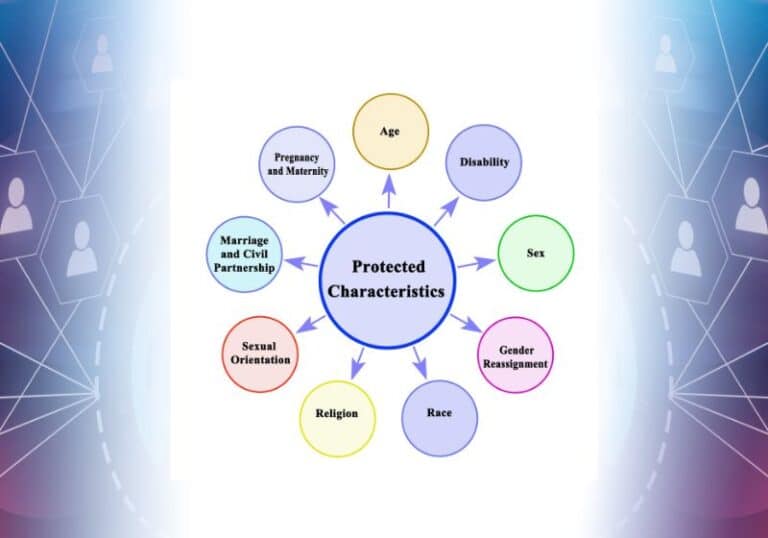What Happens to Pension Contributions During Maternity Leave?

When one of your employees goes on maternity leave, it can raise a number of questions—not least around what happens to their pension contributions. This is an area where many employers are unsure of their legal obligations and best practice, especially when dealing with statutory maternity pay (SMP), enhanced schemes, or unpaid leave.
To clear things up, I sat down with one of our HR consultants, Ella Crooks, to discuss how pension contributions are affected during maternity leave, what employers need to do, and how to avoid common pitfalls.
Let’s start with the basics.
When reviewing pension contributions during maternity leave, it’s crucial to distinguish between employee contributions and employer contributions, as they are treated differently. While employee contributions during paid leave are usually based on the actual pay received (which may be reduced to SMP or nil), employer contributions must be based on the employee’s normal salary, not the reduced figure, for the duration of paid maternity leave.
This can create a disparity that some employers overlook—especially in schemes involving salary sacrifice or enhanced maternity pay.
So, when assessing your pension obligations, always clarify which part of the contribution you’re considering. It’s not just a technicality; it affects your compliance and cost planning.
Do employers have to continue making pension contributions while an employee is on maternity leave?
Ella: Yes, during the period of Ordinary Maternity Leave (the first 26 weeks), employers must continue to make pension contributions as if the employee were working normally, based on her pre-maternity salary—not her reduced SMP or nil pay.
So what happens during Additional Maternity Leave (weeks 27–52)?
Ella: The obligation to continue contributions typically continues for any period where the employee is receiving pay—whether that’s SMP or any enhanced maternity pay. Once the employee moves onto unpaid leave (usually after week 39 if only statutory pay is given), there is no legal requirement for either party to continue contributions unless the employment contract or pension scheme says otherwise.
Do employees have to continue paying their own contributions?
Ella: Not exactly. During paid maternity leave, employee contributions are usually based on actual pay received (so lower than normal).
The employer, however, continues to pay their share based on the normal salary. If the employee moves into an unpaid period, their contributions usually stop unless they voluntarily choose to continue, which is rare.
What if we offer an enhanced maternity package?
Ella: Then your obligations may extend depending on the terms of your enhanced scheme. If you’re paying full or partial salary beyond the statutory requirement, you’re also likely expected to continue pension contributions during that period.
And what about automatic enrolment—how does maternity leave affect eligibility?
Ella: If an employee earns less than the threshold for auto-enrolment during maternity leave, they may temporarily fall out of automatic enrolment. However, they can opt in again, and employers must still pay contributions if they do.
Are there different rules for different types of pension schemes?
Ella: Yes. Defined contribution schemes (most common now) tend to follow the rules we’ve discussed. But defined benefit schemes might have specific rules and formulas, so it’s important to check with your pension provider or scheme administrator.
What’s a common mistake employers make in this area?
Ella: A big one is stopping contributions altogether when SMP kicks in or when the employee goes on unpaid leave, without checking the specific timings or scheme rules. Another is continuing to deduct employee contributions based on normal pay rather than actual pay—this can cause overpayments.
Can an employee top up their pension after returning from maternity leave?
Ella: Yes, some schemes allow for this. Employees can choose to make additional voluntary contributions to make up for the period they weren’t contributing or were contributing less. Employers are not obliged to match these top-ups unless agreed otherwise.
What should an employer do to stay compliant?
Ella : First, check your pension scheme rules and employment contracts. Then, ensure your payroll provider understands how to calculate contributions correctly during maternity leave. Also, provide employees with clear communication so they know what to expect.
How should we handle communications with the employee about this?
Ella: Transparency is key. Let them know what will happen to their pension during their leave, ideally as part of your maternity pack or in a one-to-one HR meeting. It can be a confusing area, and reassurance goes a long way.
If the employee doesn’t return after maternity leave, does that change anything?
Ella: No, any contributions made during maternity leave stand. You can’t ask for anything back. But of course, once they leave employment, pension contributions cease as with any leaver.
Is there anything else SMEs should be aware of?
Ella: It is important to remember that pensions are part of your broader responsibilities during maternity leave. Treat them with the same care you would for pay, benefits, and return-to-work planning. Getting it wrong can lead to reputational or even legal issues.
How does maternity leave affect salary sacrifice pension schemes? What does that mean for the employer?
Ella: Great question—salary sacrifice arrangements can complicate things a bit. Under a salary sacrifice scheme, the employee agrees to reduce their gross salary, and in return, the employer pays that amount into the pension on their behalf. But during maternity leave, especially when the employee is receiving SMP or no pay at all, there may not be enough salary to sacrifice.
In these cases, the employer must continue to pay the full sacrificed amount into the pension scheme at their own cost, based on the pre-maternity salary—because the salary sacrifice agreement still applies. So, even if the employee is on nil pay, the employer is still liable to cover the agreed pension contributions in full, as if the salary sacrifice were still in effect.
For employers, this is a cost consideration that often gets overlooked. It’s important to plan ahead, especially if several employees are on maternity leave at the same time under salary sacrifice arrangements.
What about payroll software—does it automatically calculate pension contributions during maternity leave, or does someone need to manually adjust it?
Ella: That really depends on the payroll system you’re using. Some modern software can handle maternity-related pension contributions automatically, especially if it’s linked to your pension provider and the employee’s maternity leave dates are accurately entered. However, in many cases, particularly with salary sacrifice schemes or enhanced maternity pay, the payroll administrator will need to manually review and adjust the pension contributions to make sure the correct employer and employee amounts are being applied.
It’s essential that whoever runs your payroll understands the rules and knows what to check for.
You can’t always rely on the system to get it right—especially if the default settings don’t account for maternity leave scenarios. A quick review each payroll run during leave can help you stay compliant and avoid costly errors.
Final Thoughts
Pensions may not be the first thing you think of when an employee goes on maternity leave, but they’re an important part of your responsibilities as an employer. If you’re ever unsure, it’s best to seek professional advice—especially if you have an enhanced maternity scheme or a non-standard pension arrangement.
Got a question about this or anything else HR-related? Drop us a line—we’re always happy to help.
Ella Crooks
Ella is one of our full-time HR Consultants, bringing valuable experience in recruitment and compliance. Known for her friendly and professional approach, she’s passionate about supporting clients and building lasting relationships.




